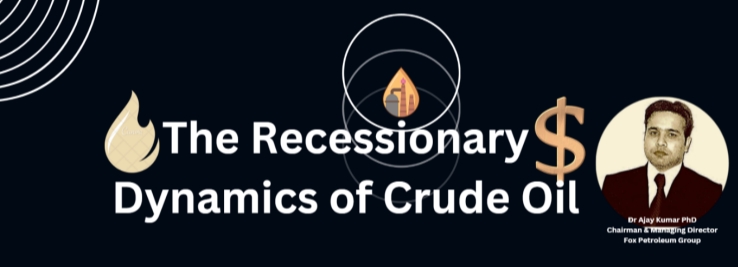
Underneath the combination of a mounting world demand for crude oil and a tight world crude supply, crude oil prices have been on a lead-in-up spree in recent years. By breaking a record level of US$78.30 per barrel (bl) on 1 May, 2023 and remaining comfortably in the neighbourhood of US$75/bl. during part of 22-2023, crude oil prices had materialized to expected territory and seemed boundless waiting to excel aimed on Ukraine Crisis, mounting further.
While developments in crude oil prices were being followed closely by economic agents, including traders, investors, speculators and policy makers, not much was known about the stochastic (i.e. having a random probability distribution or pattern that may be analysed statistically but may not be predicted precisely) processes driving these prices. Contrary to stock market indices, their underlying stochastic process is highly relevant not only for pricing derivatives and hedging, but also for policy making and short-term forecasting.
We have reached very low demand during COVID-19 shut down to the critical demand during Russia-Ukraine war. Many stunning facts regarding oil markets can be stated at the outset.
Foremost, world oil demand pressure kept increasing post lock-down, when situation started normalising, triggering oil prices to rise by more than threefold, from US$21.13/bl. to swinging between US$73.76/bl. to US$. 80/bl average.
Second, the noted incline in oil prices was not monotonic or smooth; oil prices rose, often to a new record, retreated temporarily, then resumed their move to
higher record; their movements were dominated by high intensity jumps,
indicating that oil markets were constantly out-of equilibrium.
For example to maintain middle east economy – the producers of GCC Countries and Africa in a club you can say OPEC and Off OPEC cut production.
The scene changes dramatically. Third, oil price volatilities were excessively high. Measured by the implied volatility, volatility was in the range of 30 percent, implying that oil markets were facing big uncertainties regarding future price developments and were sensitive to small shocks and to news.
Russian invasion has made a major crisis
in supply despite its availability, and price was managed by sanctioning 40% discount on Russian Crude. They increased production, to maintain their economy, it is black marketing of Crude first time in the history. Finally, market expectations, extracted from crude oil call and put option prices, were right-skewed.
More specifically, markets held higher probabilities forfurther price increases than price decreases. Moreover, markets seemed to expect large upward jumps in oil prices, as reflected by the price and volume of options at strikes in the range of US$75–US$85/bl.
The Recent Trends: With a view to concentrating on recent oil prices dynamics, the sample period was chosen for last 12 months till 31st March 2023 containing daily observations. The data illustrates the daily behaviour of oil prices. It clearly shows that oil prices were moving upward, and have become forecastable.
These price dynamics translated the underlying fundamentals of the oil markets.
In spite of rising prices, for 2023 as a whole, world oil demand is forecast to rise
by an average 2 mb/d, to 101.9 mb/d, with the non-OECD accounting for 87% of the growth and China alone making up more than half the global increase.
Who saved the Oil Price increase the – the World Economic Growth. The recessionary growth has put oil under a streamline, still it has fluctuations but not bound to go very high, not necessarily pass US$ 100/bl.(caution if US hits nuclear missile, it may surpass all barriers).
The baseline forecast is for global growth to fall from 3.4 % in 2022 to 2.8% in 2023 aiming recession0for a long term but mild, before settling at 3.0 percent in 2024. Advanced economies are expected to see an especially pronounced growth slowdown, from 2.7 % in 2022 to 1.3 % in 2023.
Conclusion: Any front opening – Iran-Israel, Iran-US, Clash in South China sea
and even in the term of US and NATO finally agreed for nuclear use against
Russia (for the sack of news only, Russia will never make first use of nuclear – the U.S. can), may cease world development for almost 180 days. The close of
economic activity to normalisation. It is also to be noted if any new entrant in
nuclear club– anyone tests nuclear bomb targeted time November or December
may hit oil price. Here it is pertinent that North Korea is not a chapter for Oil
Crisis. Finally, US$ 80/bl is a good price for producers and producing economy. – Dr. Ajay Kumar PhD (Chairman, Fox Petroleum)







